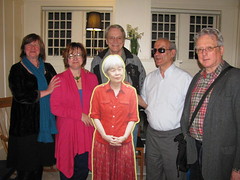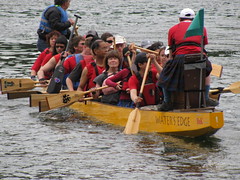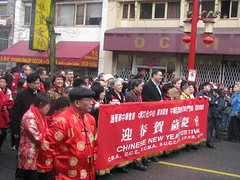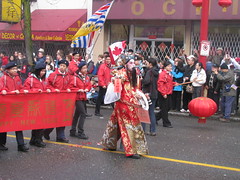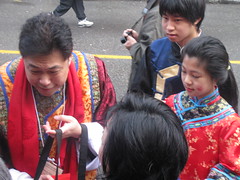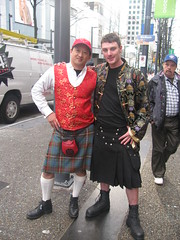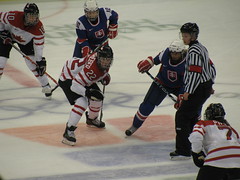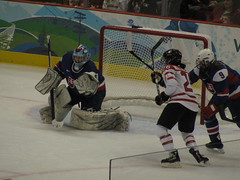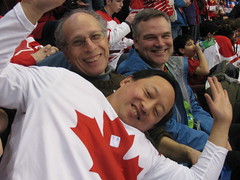Todd Wong is delighted to host the 7th annual 2010 BC Book Prizes Soirée 2010 on April 7th at the Listel Hotel.

Todd Wong and George McWhirter, then Poet Laureate of City of Vancouver, at the 2007 BC Book Prizes Soiree. photo D. Martin
This is one of my favorite events of the literary year, where all the nominees of the 2010 BC Book Prizes are invited for a casual evening, prior to the BC Book Prizes Gala.
Here are the details:
Wednesday, April 7, 2010
The Listel Hotel
Impressionist Gallery Room
1300 Robson Street
Vancouver, BC
The nominated authors are invited out to mix and mingle with BC’s
vibrant literary community and support the BC Book
Prizes On Tour program. There are great door prizes (3 years ago I won
a gift certificate for SALT Restaurant) and silent auction prizes that
include
weekend getaways, prize-winning books and many other fabulous items (I
love my two dragon puppets that were donated by BC Library
Association). The event will also feature light refreshments provided
by The Listel Hotel. Finalist authors will sign copies of their books at the People’s Co-op Bookstore table.
Todd Wong and Terry Glavin, recipient of the 2009 Lieutenant Governor's Award for Literary Excellence at the 2009 BC Book Prizes Gala
The 2010 Lieutenant Governor’s Award for Literary Excellence award will be announced on Saturday, April 17 and presented
at the annual Lieutenant Governor’s BC Book Prize Gala on April 24,
2010.
I am pleased that I could be there when the awards were presented to my friends: 2009 Terry Glavin and 2008 Gary Geddes
The Lieutenant Governor’s BC Book Prizes Gala 2010 will be held in Victoria BC, at Government House, and hosted by my friend Shelagh Rogers.
Shelagh Rogers hosted a “Purdy's Party” at Historic Joy Kogawa House last year, with Jean Baird, George Bowering, John Asfour (inaugural Kogawa House writer-in-residence) and George Stanley. The event was part of BC Book Week – photo Todd Wong
ABOUT TODD WONG:
I have been in love with books since I was a child. My parents would take me shopping to their friends' book warehouse where we could pick out a brand new book. My mother worked at the Vancouver Public Library, and introduced me to all her library friends and the many many books and libraries. And now I have worked at the Vancouver Public Library for over 30 years, where I served on the inaugural One Book One Vancouver committee that celebrated Wayson Choy's “The Jade Peony”.
I remember being thrilled to pick up Joy Kogawa's “Obasan” because it was one of the first Canadian novels to tell the story of Asian Canadians. Paul Yee's books became magical for me, as I volunteered in 1986 at the Saltwater City museum display that Paul curated, and inspired his award winning book Saltwater City (my picture is included in the revised 2006 edition).
Little did I know back then, that I would become an active board member for the Asian Canadian Writer's Workshop beginning in 2000, and help create the ACWW Community Dinner to recognize some of our great Asian Canadian writers. In 2005, I became involved in the Save Kogawa House campaign, which helped to save author Joy Kogawa's childhood home from impending demolition. Today, I am president of Historic Joy Kogawa House Society, and a board member for The Land Conservancy of BC, proud owners of Kogawa House.
And somewhere along the way, I created the Gung Haggis Fat Choy Robbie Burns Chinese New Year Dinner, that each year features a local writer alongside the immortal poetry of Robert Burns. Past years have featured Joy Kogawa, Jim Wong-Chu, Sean Gunn, George McWhirter, Fred Wah, Rita Wong, Fiona Tinwei Lam, and this year Larissa Lai. Both Larissa and Fiona are poetry nominees for this year's BC Book Prizes.
Somehow, everything seems to return full circle. I love BC Books and BC authors.
Todd Wong at Scottish Parliament display of “This is Who We Are: Scots in Canada” – a picture of Todd in kilt and Chinese Lion Head was featured in the display for his work in Canada promoting the poetry of Robert Burns in Gung Haggis Fat Choy Robbie Burns Chinese New Year Dinner events. photo Onya Attridge.


